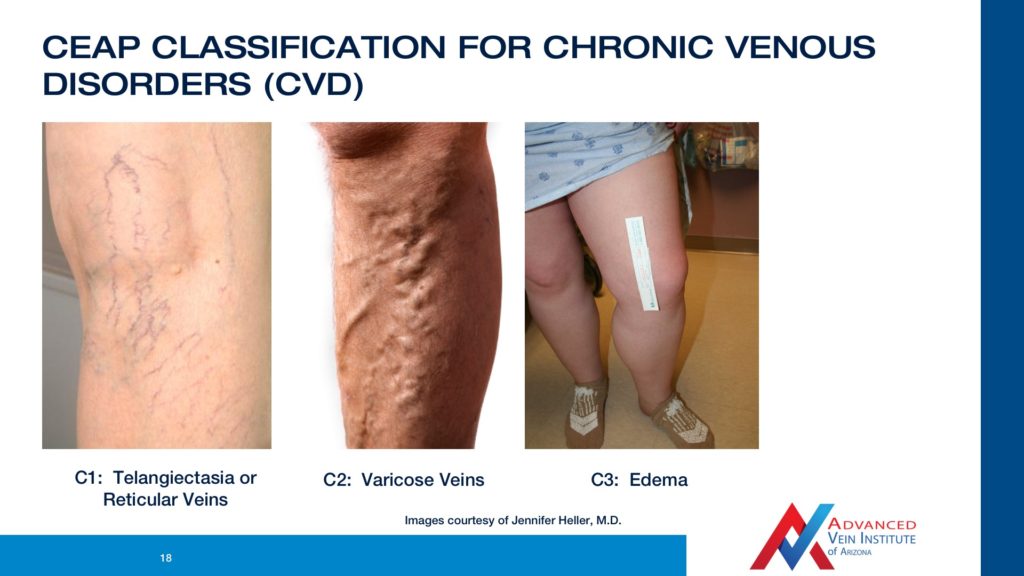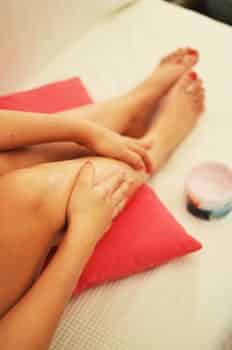VIDEO – The Causes of Vein Insufficiency
04 CVI The Causes of Vein Insufficiency from Tim C Martin on Vimeo.
If you have any questions or concerns about your vascular health, please schedule an appointment with Jilanne Rose at our Phoenix, Arizona office. With over 10,000 peripheral vein procedures to her credit, she is the Arizona Vein Specialist who can help you with any vascular concerns you may have.
And please share this with someone you care about!
VIDEO TRANSCRIPT
Factors of venous insufficiency:
The biggest and most prominent factor is genetics. Most people have a parent or grandparents that had bad veins and it passes on down the line. The onset of vein insufficiency in women is about the age of 35 and in men it’s a little older at 45.
Women and CVI
Things in women that can make chronic venous insufficiency worse: In pregnancy, with the increase in blood volume and hormonal shift, this increases the prevalence of the vein insufficiency and speeds up the time. The other thing that contributes to it is hormone replacement. When we first started replacing hormones in women we used to slam them with these huge doses of estrogen and progesterone. Those massive doses increased the incidence of vein insufficiency. It is not so prevalent now with the bioidentical hormones. They have dialed down birth control pills and that type of thing. So now, it is not as much of a factor but it certainly used to be.
Things such as smoking, hypertension, and obesity – a lot of those contribute to vascular compromise; however, usually most of those contribute more to the arterial type of disease.
Venous Insufficiency Causes?
So very briefly –what causes vein insufficiency? Essentially I like to relate it to stretching a rubber band out. You can stretch that rubber band out so many times and then you can’t make it regain its elasticity. That is very similar with veins.
Because of gravity and values that exist within these veins once they become weak and dilated the veins always remain stretched out. For that reason often times we get the symptoms we do. So if we are standing in a stationary position for a long period or if you are sitting for long periods of time, such as on long flights or long drives, the blood settles in pools in these weak veins and that is what causes swelling, night cramps, fatigue, heaviness, restless legs and numbness and tingling. Some people progress into itching, recurrent infections of the legs, and then eventually wounds if it progresses to that point.
This is one of the classifications that we use that are required to classify how significant veins are. The reticular veins are the ones you see on the surface of the skin, the little red wispy, almost spider vein-like eruptions.
The varicose veins are the larger ones that almost look like little ropes or cords under the surface of the skin.
Edema is a fancy word for swelling. A lot of people will get swelling around the ankles. If swelling gets real significant it just builds and progresses up the leg.
Pigmentation or eczema - a lot of times with chronic venous insufficiency, when that blood settles and pools in these veins, the skin starts to lose the nutrients it needs to stay healthy on the inside so that the body starts to try to protect its self. It starts to toughen up the skin and then the skin can turn brown. If you are pale or fair skinned, your skin turns a little bit darker. If you are darker complected sometimes it will actually turn black. It normally progresses and then you wind up with lipodermatosclerosis, another fancy term. The tissue starts to turn and break down and cause ulcers.

Q & A Pregunta: ¿Qué es el tiempo de induración? Respuesta: el downtime se basa en gran medida en el tipo de intervención y la severidad de la enfermedad venosa. Independientemente del tipo de intervención, nuestros pacientes reanudan todas las actividades el mismo día que el tratamiento. Algunos tratamientos requieren medias de compresión post-procedimiento, pero…
Read MoreQ & A Question: What is the down time? Answer: Downtime is largely based on the type of intervention and severity of the vein disease. Regardless of the type of intervention, our patients resume all activities the same day as treatment. Some treatments require compression stockings post-procedure, but most times these are worn for comfort and…
Read MoreVenas dolorosas y antiestéticas de las piernas Con el calor de Arizona, un día de verano, día de invierno, o cualquier día es ideal para usar shorts. Pero para aquellos con varices o venas de araña, la idea de usar pantalones cortos es preocupante y lleva a la ansiedad severa. Según el Departamento de salud…
Read MorePainful and unsightly leg veins With the Arizona heat, a summer day, winter day, or any day is ideal for wearing shorts. But for those with varicose veins or spider veins, the thought of wearing shorts is troubling and leads to severe anxiety. According to the U.S. Department of Health and Human Services, 55% of…
Read MorePregunta: ¿dos ultrasonidos Doppler encuentran cualquier coágulo de pierna? (Muslo o pantorrilla). ¿Es el síndrome de mayo-Thurner (MTS) posible y un venography necesario en mi caso?
Read MoreQuestion: Would two Doppler ultrasounds find any leg clots? (Thigh or calf). Is May-Thurner syndrome (MTS) possible and a venography necessary in my case?
Read MoreSi quisiera deshacerse de las venas antiestéticas, las venas de araña, o las varices dolorosas; a continuación, la búsqueda de resultados de escleroterapia, a través de un especialista en la vena, puede ser la elección correcta para ayudar a mejorar su dolor, la felicidad y su apariencia. En este procedimiento rutinario, el médico de la…
Read MoreIf would like to get rid of unsightly veins, spider veins, or painful varicose veins; then pursuing sclerotherapy results, through a vein specialist, may be the right choice to help improve your pain, happiness, and your look. In this routine procedure, your vein doctor injects a chemical into the veins which will cause the veins…
Read MoreParece concebible que cuando los expertos en Salud estiman que el 10 por ciento de las mujeres embarazadas experimentan várices vulvares, es decir, varices vaginales, podrían subestimar groseramente la incidencia de esta afección. Hay mujeres — que saben cuántas — que no reportarán este dolor, picazón, pesadez e incomodidad general en la vulva, ya sea…
Read MoreIt seems conceivable that when health experts estimate that 10 percent of pregnant women experience vulvar varicosities, that is to say vaginal varicose veins, they could be grossly underestimating the incidence of this condition. There are women—who knows how many—who will not report this pain, itch, heaviness and general discomfort in the vulva, either because…
Read More


